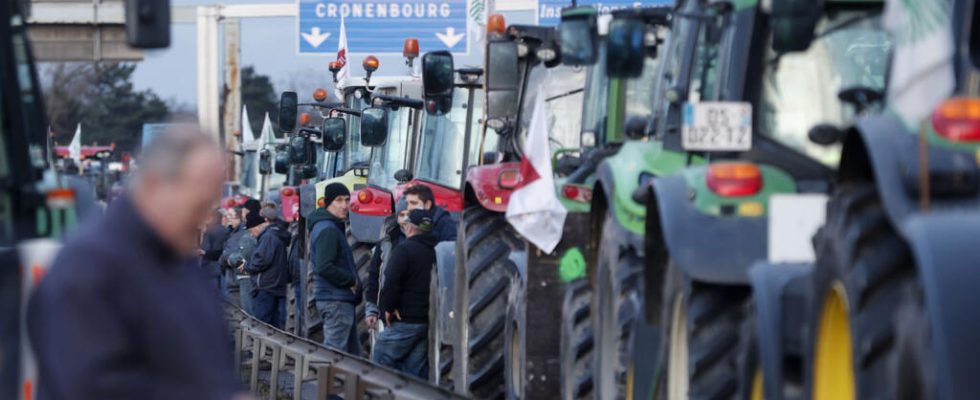If the crisis in the agricultural world is not coordinated at European level, certain European Union policies are in the sights of farmers: the Common Agricultural Policy (CAP) in particular, but also the agricultural aspect of the Green Deal, which This is called the “farm to fork strategy” and the biodiversity strategy.
3 mins
The Common Agricultural Policy is one of the oldest, and most important, European policies. It was established in 1962 to ensure the continent’s food sovereignty. Today, it still represents more than a third of the European Union’s expenditure. In 2023, the budget of the CAP represents 53.7 billion euros at EU level. French farmers are the main beneficiaries with more than 9 billion euros per year, representing 22% of their income, according to the European Commission.
The new CAP, negotiated step by step and voted on in 2021, came into force on January 1, 2023. It must reconcile a very important objective of income support and better conservation of the environment. Note that today, almost all Member States have chosen to favor income support. As a result, there are no longer any real resources devoted to environmental protection. As a result, this protection is essentially achieved by adding new standards.
The new CAP was to ensure a fairer, greener and more performance-oriented policy. These promises cannot be kept. It is a totally failed CAP, according to MEP Christophe Clergeau, member of the Socialists and Democrats group, who prefers to speak of a conservative, liberal and inactive CAP. The elected official believes that this CAP has given up tools to regulate markets, to avoid ups and downs in agricultural prices and to ensure farmers’ income. In addition, this CAP, he says, was not designed for ecological transformation, it does not make it possible to support farmers in their change of model.
Administrative burdens
For his part, Hervé Guyomard, research director at Inrae (National Research Institute for Agriculture, Food and the Environment) believes that this is a CAP of the status quo. There is notably little change on the question of the distribution of aid, an issue that is found throughout Europe, but with a particular magnitude in France. Thus, the majority of aid is allocated according to the number of hectares, favoring large farms. At the European level therefore, “ 20% of the largest farmers own 83% of agricultural land and receive 81% of European aid », Explains the Franceinfo fact-checking service. At the French level, “ 20% of the largest farmers own 52% of agricultural land and thus receive 35% of European aid “.
If farmers do not directly question this policy, they denounce the administrative burden it involves, particularly regarding compliance with environmental standards. Indeed, to verify that the Common Agricultural Policy achieves its objectives in this area, it is necessary to multiply the documents, detailing the impact of the measures on each farm, then in each Member State.
Another criticism made of Europe: the agricultural aspect of the Green Deal, also called the “farm to fork strategy”, as well as the biodiversity strategy. Both play an important role in the agricultural sector, by reducing the use of fertilizers and pesticides; by asking to increase the shares devoted to organic farming; by also increasing what we call “the diversified elements of the landscape”, that is to say hedges, embankments, ponds… But it must be specified that in the current CAP, these strategies are still very little taken into account.
In an attempt to defuse the current crisis, and in a context of geopolitical upheaval, the European Commission has invited the agricultural world from September 2023 to a “strategic dialogue” with the European institutions. The approach of the elections in June nevertheless risks putting an end to these discussions, while a new European Parliament and a new commission are put in place.
